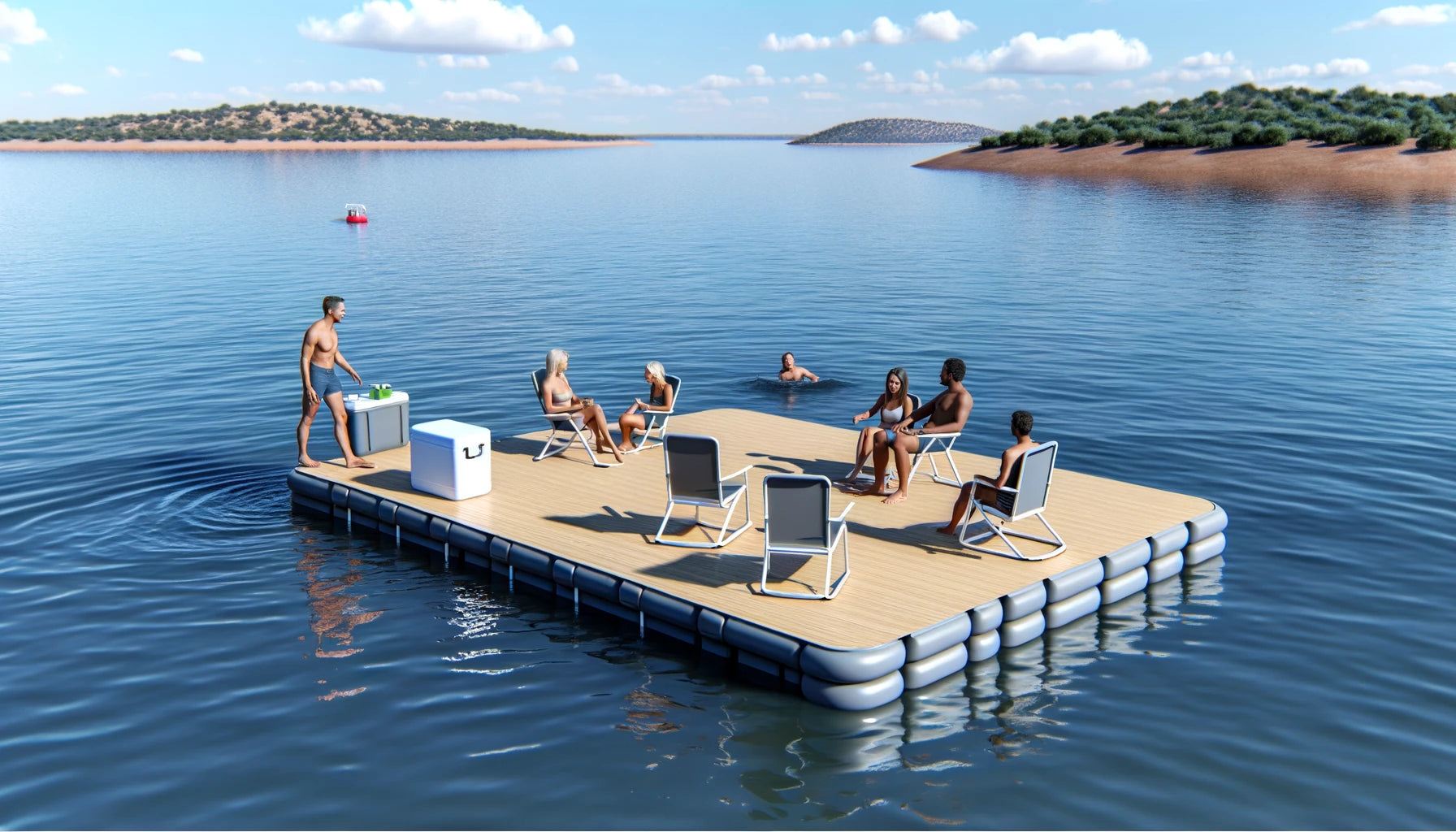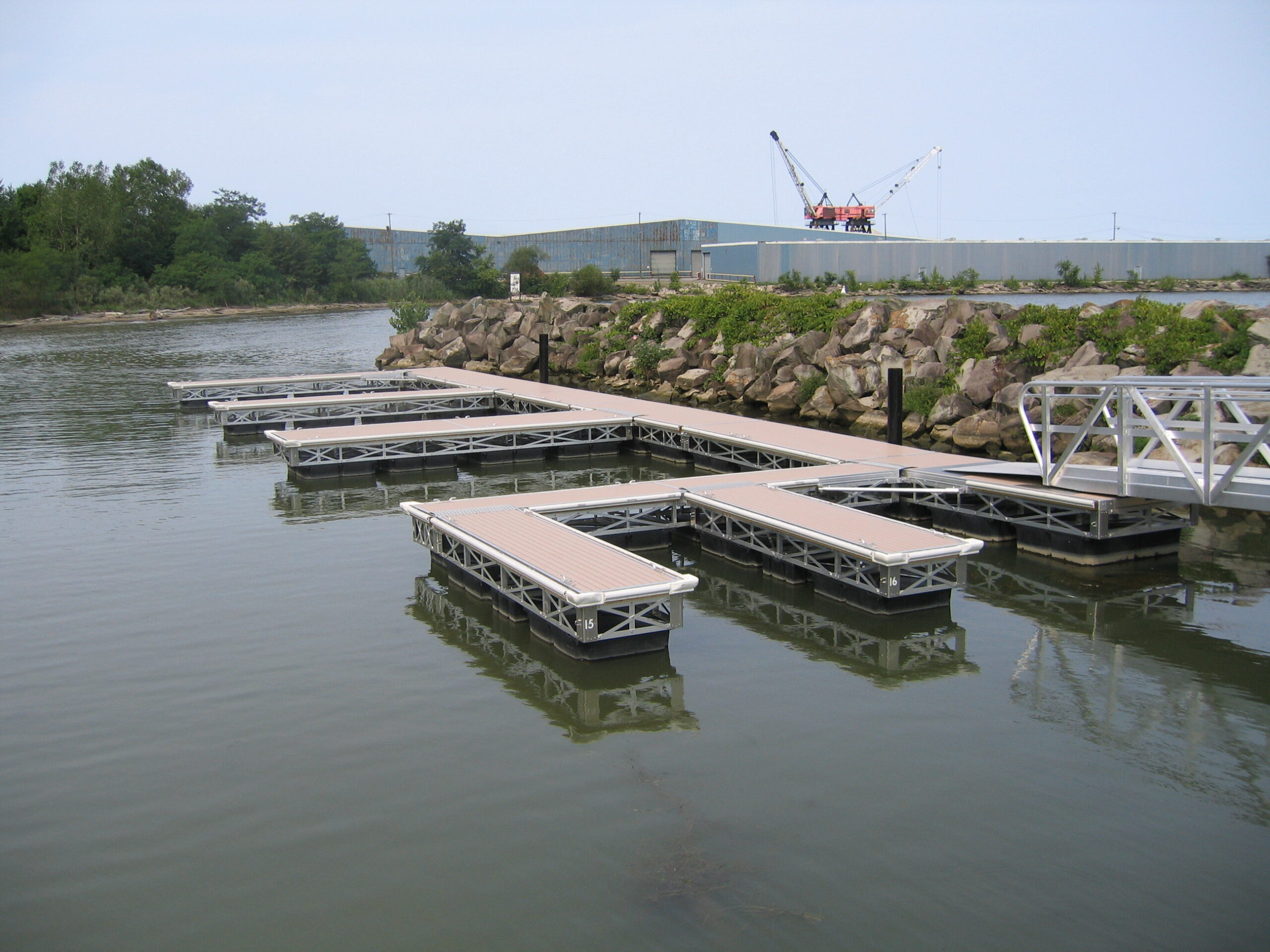Find the Perfect Floating Dock Builder to Bring Your Waterfront Vision to Life
Find the Perfect Floating Dock Builder to Bring Your Waterfront Vision to Life
Blog Article
Produce the Perfect Docking Option With Floating Docks
Floating docks existing a versatile solution for a selection of maritime requirements, adapting flawlessly to rising and fall water levels and diverse vessel kinds. As we explore the vital elements that add to the efficiency of floating docks, several key variables pertaining to stability and maintenance will certainly emerge, increasing concerns concerning just how to enhance your docking experience.

Advantages of Floating Docks
Floating docks offer countless advantages that make them a suitable selection for different maritime applications. One of the primary advantages is their versatility to altering water degrees. Unlike repaired docks, floating docks surge and fall with the tide, guaranteeing regular availability for vessels. This attribute is especially crucial in locations susceptible to significant tidal fluctuations or seasonal water level changes.
In addition, floating docks are generally easier and quicker to set up compared to traditional fixed structures. Their modular design enables uncomplicated setting up and disassembly, assisting in maintenance and relocation when essential. This adaptability is particularly advantageous for temporary applications or in settings where problems may change.
Floating docks also often tend to be a lot more ecologically friendly, as they lessen interruption to the seabed and surrounding marine ecological communities. Their resilient nature minimizes the risk of damages to aquatic life, promoting a healthier environment. In addition, these docks can be tailored to suit numerous vessel dimensions, making certain that they meet details functional needs - dock company.
Ultimately, the combination of flexibility, simplicity of installment, and ecological considerations makes floating docks an extremely efficient option for a large range of maritime needs.
Selecting the Right Products
Choosing the suitable materials for floating docks is essential to make certain sturdiness, security, and longevity. The selection of products straight influences the dock's performance in various environmental conditions, consisting of direct exposure to water, sunshine, and possible wear from aquatic traffic.
Typical materials made use of for floating docks include light weight aluminum, timber, and high-density polyethylene (HDPE) Light weight aluminum is light-weight, corrosion-resistant, and needs marginal upkeep, making it a superb selection for long life. Its preliminary expense can be greater compared to other materials.
Timber, while aesthetically attractive and offering a conventional appearance, can be at risk to rot and bug damages otherwise effectively dealt with. Consequently, making use of pressure-treated timber or naturally durable species like cedar or redwood can mitigate these concerns.
HDPE is a preferred choice as a result of its resistance to UV rays and chemicals, along with being eco-friendly. floating docks. It is lightweight and available in various shades, permitting modification
Ultimately, the ideal material choice will depend on specific demands, consisting of budget plan, preferred aesthetics, and environmental factors to consider. Cautious evaluation of these aspects will lead to a successful and resistant floating dock solution.
Layout Factors To Consider for Stability
When creating floating docks, making sure security is a basic aspect that can dramatically affect their performance and safety and security. Stability in floating dock style is affected by numerous factors, consisting of buoyancy, weight circulation, and the arrangement of elements.
Weight circulation is crucial; evenly dispersing tons across the dock stops tilting and enhances security. Broader styles can offer increased security, especially in rough water conditions, while longer docks might need extra supports to protect against drooping.
One more key factor to consider is the ecological impact, including wave activity and wind. Integrating functions such as sidewalls or skirting can help mitigate the results of environmental forces, keeping security in unfavorable problems. Eventually, a combination of thoughtful layout, material choice, and understanding of environmental variables will generate a floating dock that meets both security and safety needs.
Setup Tips and Techniques

Next, protect the required authorizations and stick to neighborhood laws, which might dictate setup approaches and ecological factors to consider. If needed, involve a qualified contractor experienced in floating dock setups. Use high-grade materials made for aquatic environments to enhance resilience and longevity.
When positioning the dock, align it identical to the coastline to assist in easy access. Guarantee that the anchoring system is robust, utilizing cinder block or helical anchors to maintain the dock Check Out Your URL versus wind and wave activity. Read Full Report It's crucial to make up seasonal water level fluctuations, consisting of potential ice movement in cooler environments.
During the installation, confirm the dock's floatation and stability before wrapping up the anchoring. Regularly examine the installation for any type of indicators of wear or damage. By complying with these pointers and methods, you can accomplish a protected, practical, and visually pleasing floating dock installation that satisfies your requirements.
Upkeep and Care Standards
Keeping and caring for floating docks is essential to extending their life-span and ensuring safe usage. Regular examinations ought to be conducted to identify any indications of wear, damage, or marine growth. Try to find fractures, loose installations, or stained locations on the dock's surface, as these issues can jeopardize structural honesty.
Cleansing is vital. Utilize a stress washer to get rid of algae, barnacles, and particles, which can collect gradually. For stubborn development, think about eco-friendly cleaner that won't harm marine life.
Furthermore, inspect the mooring lines and supports often to guarantee they are free and protected from rust. Change any frayed or harmed lines without delay to keep stability.
During extreme climate, such as storms or freezing conditions, take precautionary actions. Secure the dock with extra mooring lines and, if viable, get rid of any kind of removable components to stop damage.
Final Thought
In verdict, the implementation of floating docks offers a reliable and flexible docking click here for more info service ideal for numerous maritime applications. With appropriate installation and normal maintenance, floating docks can offer efficient and reliable docking experiences for a large range of vessels.
As we check out the important aspects that add to the efficiency of floating docks, several vital elements pertaining to stability and upkeep will arise, raising concerns concerning how to enhance your docking experience. Unlike dealt with docks, floating docks increase and loss with the tide, guaranteeing constant access for vessels.When designing floating docks, guaranteeing security is a basic aspect that can dramatically influence their functionality and security. Security in floating dock design is influenced by various aspects, consisting of buoyancy, weight circulation, and the arrangement of components. Ultimately, a combination of thoughtful design, material choice, and understanding of environmental aspects will certainly produce a drifting dock that satisfies both stability and security demands.
Report this page